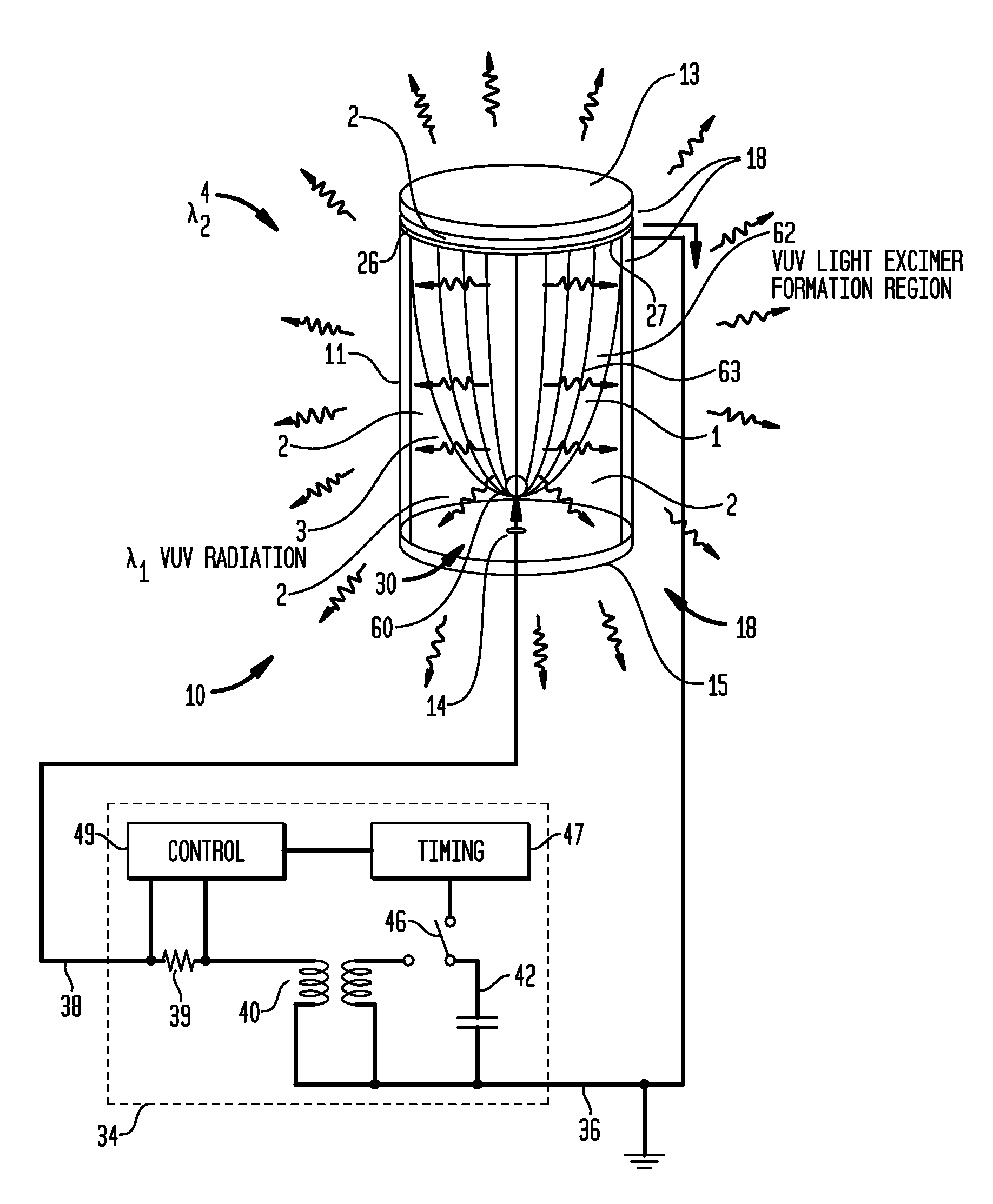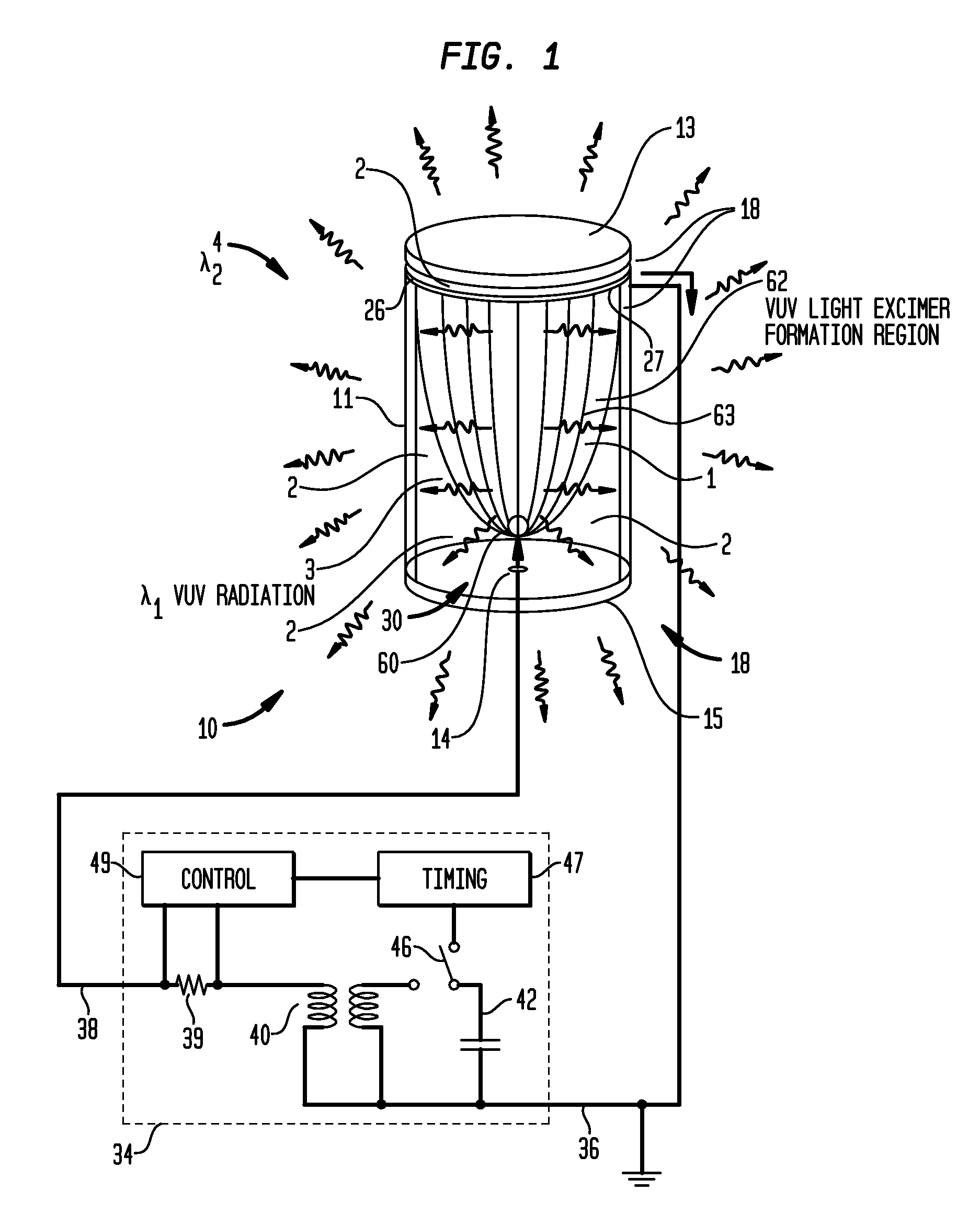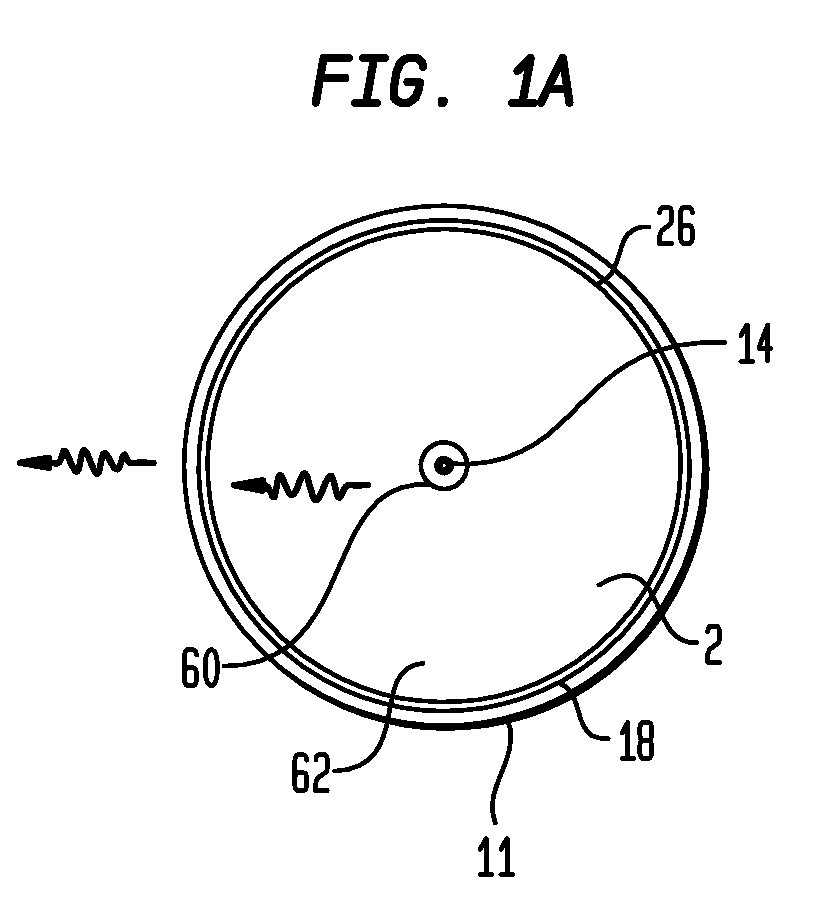Fluorescent excimer lamps
a technology of fluorescent excimer lamps and fluorescent lamps, which is applied in the direction of discharge tubes/lamp details, discharge tubes luminescnet screens, structural circuit elements, etc., can solve the problems of phosphor degradation, mercury discharge lamps, harming the environment, etc., and achieve the effect of efficient transmission
- Summary
- Abstract
- Description
- Claims
- Application Information
AI Technical Summary
Benefits of technology
Problems solved by technology
Method used
Image
Examples
example 1
[0048]A cylindrical germicidal fluorescent lamp was fabricated substantially as depicted in FIGS. 2 and 2A. The chamber was formed from a quartz tube. The interior surface of the tubing was coated with YPO4:Bi phosphor of the type described in the paper Temperature-Dependent Spectra of YPO4:Me (Me ¼ Ce; Pr, Nd, Bi), T. Jüstel, P. Huppertz, W. Mayr, D.U. Wiechert, Journal of Luminescence 106 (2004) 225-233. A wire mesh counter electrode was positioned inside of the phosphor-coated tube, and a wire electrode was provided adjacent the center of the tube. The tube was filled with Xe. In operation, the phosphor emitted light with a power density of tens of mW / cm. The emitted light had a spectrum obtained as shown in FIG. 5, closely matching the spectrum reported in the literature. The emitted light had a substantial component at about 250 nm wavelength, in the germicidal UVC range. The lamp was operated continuously for several months without observable decrease in emission. The lamp thu...
example 2
[0049]A commercial “cool white” fluorescent lamp is disassembled and the mercury-containing gas and electrode structure is removed, leaving a glass tube with the ordinary white-emitting phosphor mix. The tube is assembled with an electrode and counter electrode generally as shown in FIGS. 2 and 2A, and filled with Xe. Upon excitation, the Xe excimers produce 172 nm VUV radiation which impinges on the phosphor. The lamp yielded white light with a luminous efficacy of 90 lumens / watt, considerably better than that of conventional compact fluorescent lamps containing mercury.
PUM
 Login to View More
Login to View More Abstract
Description
Claims
Application Information
 Login to View More
Login to View More - R&D
- Intellectual Property
- Life Sciences
- Materials
- Tech Scout
- Unparalleled Data Quality
- Higher Quality Content
- 60% Fewer Hallucinations
Browse by: Latest US Patents, China's latest patents, Technical Efficacy Thesaurus, Application Domain, Technology Topic, Popular Technical Reports.
© 2025 PatSnap. All rights reserved.Legal|Privacy policy|Modern Slavery Act Transparency Statement|Sitemap|About US| Contact US: help@patsnap.com



